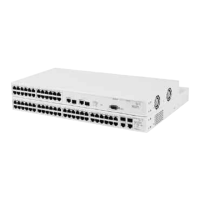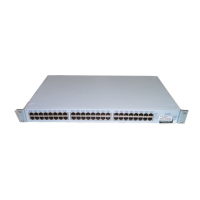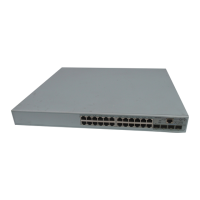Multicast Filtering and Your Switch 33
wish to join or to which they already belong. The querier is always the
device with the lowest IP address in the subnetwork. It can be a router or
a Layer 2 switch. The network traffic flows most efficiently if the querier is
the closest device to the sources of IP multicast traffic.
Query Messages
The querier normally sends messages called IGMP Host Membership
Query Messages, or queries, every 125 seconds. All the hosts hear the
query because it is addressed to 224.0.0.1, the multicast address for all
systems on the subnetwork. A query is not forwarded beyond the
subnetwork from which it originates.
Host Messages
Hosts use IGMP to build their own types of IP multicast messages, as
described in this section.
Response to Queries
Hosts respond to queries with IGMP Host Membership Report messages
(IGMP reports). These reports do not travel beyond their origin
subnetworks, and hosts send them at random intervals to prevent the
querier from being overwhelmed.
A host sends a separate report for each group that it wants to join or to
which it currently belongs. Hosts do not send reports if they are not
group members.
If a router does not receive at least one host report for a particular group
after two queries, the router assumes that members no longer exist and it
prunes the interface for that source-group spanning tree.
Join Message
Rather than wait for a query, a host can also send an IGMP report on its
own initiative to inform the querier that it wants to begin receiving a
transmission for a specific group. This is called a join message. The
benefit is faster transmission linkages, especially if the host is the first
group member on the subnetwork.
Leave-Group Messages
Leave-group messages are a type of host message defined in IGMP
version 2. If a host wants to leave an IP multicast group, it issues a
leave-group message addressed to 224.0.0.2, the multicast address for all
